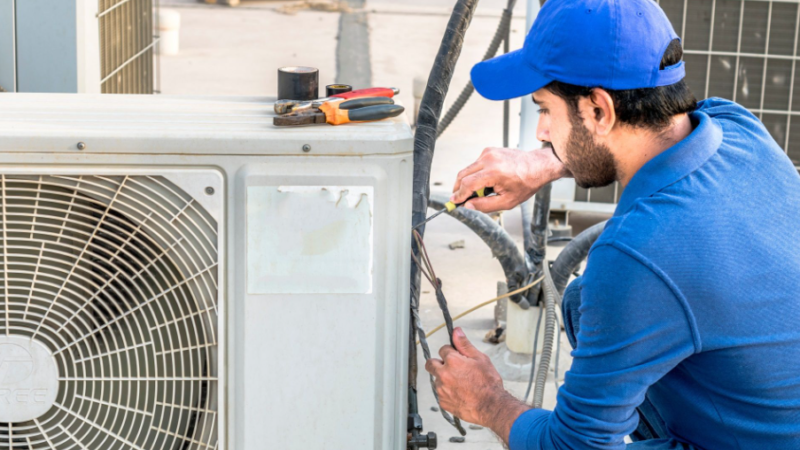How Businesses Can Transition to PFAS-Free Solutions Sustainably

In recent years, the growing awareness surrounding environmental and health concerns linked to Per- and Polyfluoroalkyl Substances (PFAS) has pushed businesses to rethink their product compositions and manufacturing processes. As more governments and regulatory bodies crack down on PFAS, businesses are facing mounting pressure to transition to safer, more sustainable alternatives. Matregenix, a leader in advanced materials technology, offers insights into how companies can make this important transition to PFAS-free solutions in a sustainable and responsible manner.
Understanding the Impact of PFAS
PFAS, often referred to as “forever chemicals,” are a group of synthetic compounds used in a wide range of products for their water- and stain-resistant properties. These chemicals are commonly found in items like waterproof clothing, nonstick cookware, food packaging, firefighting foams, and many other industrial applications. However, PFAS are highly persistent in the environment and human body, leading to potential long-term health risks such as hormone disruption, immune system issues, and cancer.
The increasing regulation and public outcry surrounding PFAS have made it clear that businesses must act to find safer, sustainable alternatives to these chemicals. But how can companies transition to PFAS-free solutions without disrupting their operations or compromising on quality?
1. Conduct a Comprehensive Audit of Current Practices
The first step toward transitioning to PFAS-free solutions is to thoroughly assess where PFAS are being used in your product lines and business operations. This includes examining raw materials, suppliers, manufacturing processes, and end-products. A deep dive into the supply chain can uncover where these chemicals are integrated and give you a clearer picture of what changes need to be made.
Matregenix suggests that businesses partner with experts in materials science and sustainability to conduct these audits. This can help identify potential hazards and determine the most effective alternatives to PFAS that meet performance requirements.
2. Engage in Research and Development (R&D) for Alternatives
Transitioning to PFAS-free solutions often requires innovative thinking and investment in research and development. Companies must prioritize finding alternatives that can match or exceed the performance characteristics of PFAS without compromising on quality or functionality. This is where companies like Matregenix can play a pivotal role, offering cutting-edge materials and technologies that are free from harmful chemicals.
For example, developing non-toxic, biodegradable coatings or water-resistant materials that offer similar durability and performance to PFAS can significantly reduce a company’s environmental impact. Investing in R&D can also help companies stay ahead of industry trends and regulatory changes, giving them a competitive advantage in the market.
3. Collaborate with Suppliers and Manufacturers
Transitioning away from PFAS requires strong collaboration with suppliers and manufacturers who can provide the necessary materials and expertise. Companies need to work closely with their suppliers to identify alternative ingredients or materials that align with their sustainability goals.
Matregenix advocates for creating partnerships with suppliers who prioritize sustainability, transparency, and compliance with environmental regulations. These partnerships ensure that businesses can source PFAS-free alternatives without sacrificing performance, all while maintaining a secure and sustainable supply chain.
As part of this collaboration, businesses should also explore the possibility of developing more eco-friendly packaging, reducing waste, and minimizing their carbon footprint throughout the production cycle.
4. Implement a Phased Transition Plan
Transitioning away from PFAS is not something that can be done overnight, especially for businesses with large-scale operations or complex product lines. It’s essential to create a phased transition plan that includes clear timelines, budgets, and performance metrics.
A phased approach allows businesses to make gradual changes that minimize disruptions to production schedules and customer expectations. By starting with the products most in need of a PFAS-free reformulation, companies can gradually expand the scope of their transition. Over time, businesses can phase out all PFAS-containing products, ensuring a smooth and manageable process.
5. Educate and Communicate with Stakeholders
For a successful transition to PFAS-free solutions, it’s crucial to educate and communicate with all stakeholders employees, customers, investors, and regulatory bodies. A commitment to sustainability and safety should be communicated clearly through marketing materials, public relations campaigns, and transparent reporting on progress.
Matregenix emphasizes the importance of maintaining an open dialogue with customers, as they are increasingly concerned with the environmental and health impacts of the products they buy. Demonstrating a proactive commitment to sustainability will not only build trust but can also create a competitive advantage in an increasingly eco-conscious market.
6. Monitor and Improve Continuously
Once PFAS-free solutions are implemented, businesses must continuously monitor their performance and environmental impact. Regular testing, audits, and evaluations are necessary to ensure that the new solutions meet safety, performance, and regulatory standards.
Sustainability is a continuous journey, and businesses must always be ready to innovate and improve. At Matregenix, sustainability is not just about making a one-time switch but about creating long-term, meaningful change that benefits the environment, public health, and business growth.
Conclusion
Transitioning to PFAS-free solutions is not only a responsibility but an opportunity for businesses to lead in sustainability. By conducting thorough audits, investing in research and development, collaborating with sustainable suppliers, and maintaining an open dialogue with stakeholders, businesses can navigate the shift to PFAS-free alternatives smoothly and sustainably. With support from innovative companies like Matregenix, organizations can meet the demands of today’s eco-conscious consumers while ensuring a safer and cleaner future for generations to come.




